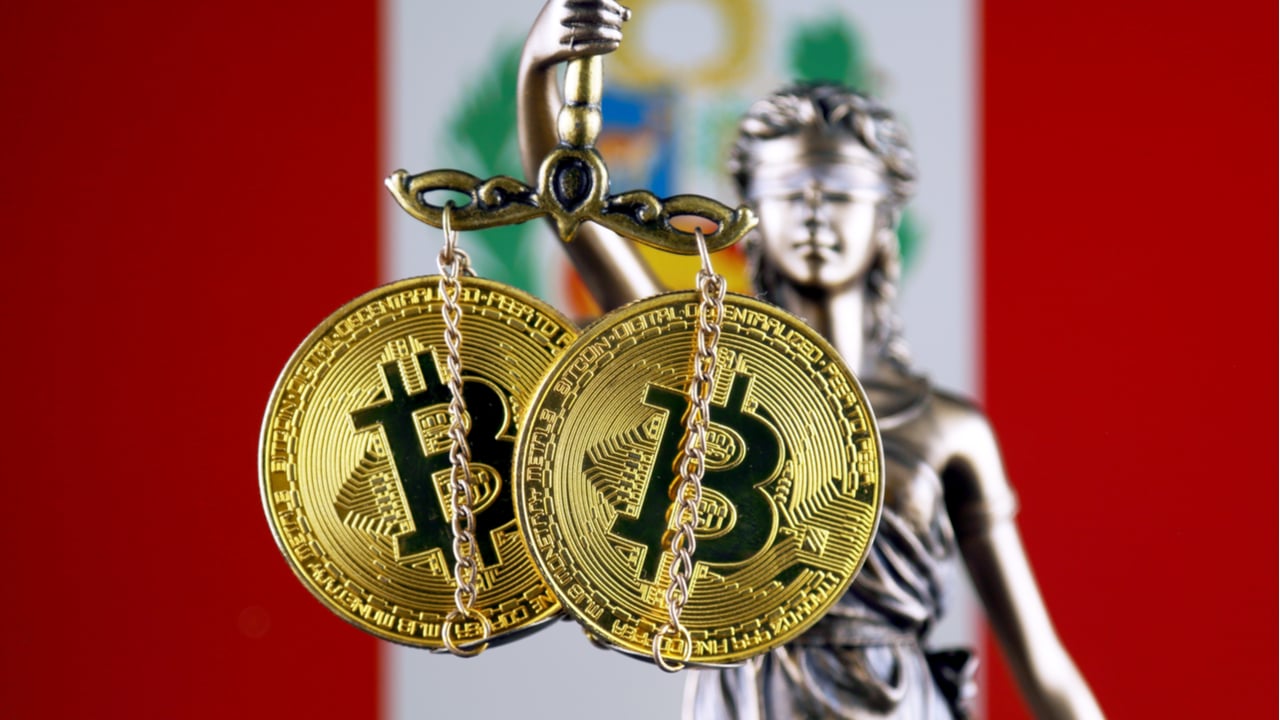 A draft of a new cryptocurrency asset law was introduced in Peru in December, seeking to regulate the cryptocurrency interactions that are already happening in the country. The draft law, besides defining what a crypto asset is and establishing the duties of virtual asset service providers (VASPs), also seeks to legalize the use of assets […]
A draft of a new cryptocurrency asset law was introduced in Peru in December, seeking to regulate the cryptocurrency interactions that are already happening in the country. The draft law, besides defining what a crypto asset is and establishing the duties of virtual asset service providers (VASPs), also seeks to legalize the use of assets […] The Central Reserve Bank of Peru, the Peruvian central bank, is planning to develop a central bank digital currency (CBDC) like other economies of the world. The announcement was made by its president, Julio Velarde, who stated that the currency would be designed for use primarily in payments. However, Velarde also acknowledged this was not […]
The Central Reserve Bank of Peru, the Peruvian central bank, is planning to develop a central bank digital currency (CBDC) like other economies of the world. The announcement was made by its president, Julio Velarde, who stated that the currency would be designed for use primarily in payments. However, Velarde also acknowledged this was not […]
The president of Peru’s central bank has indicated that the country will be joining forces with India, Singapore, and Hong Kong to develop its own central bank digital currency.
The president of the Central Reserve Bank of Peru Julio Velarde announced that his country will be entering the global race to develop a Central Bank Digital Currency (CBDC).
At the Annual Conference of Executives (CADE) with business leaders in Lima on Nov. 16 he said:
“I think the payment system we are going to have eight years from now in the world is going to be completely different from the current one… Even the financial system will probably be quite different.”
Velarde stated that Peru will partner with the central banks of countries more advanced in their development of CBDCs including India, Singapore, and Hong Kong. A CBDC is a digital form of a country’s fiat currency, issued and controlled by the respective nation’s central bank.
"We won’t be the first, because we don't have the resources to be first and face those risks," Velarde said, "But we don't want to fall behind. We are at least at the same level or maybe even further ahead than similarly-sized countries, although behind Mexico and Brazil."
According to Atlantic Council, 87 countries (representing more than 90% of global GDP) are now researching a CBDC, and seven have launched one. Comparatively, in May 2020, only 35 countries were considering developing a CBDC.
Although it doesn’t have a CBDC, El Salvador’s adoption of Bitcoin as a legal tender on Sept. 7 has put a renewed focus on digital assets in the region.
Mexico and Brazil are planning to implement CBDCs sometime before 2023, and the Bahamas already has a Sand Dollar CBDC.
As for Peru’s upcoming CBDC development partners, the Reserve Bank of India plans to launch a trial implementation of the digital rupee before the end of the year, but it is also taking its time to ensure the rollout goes smoothly.
“We are being extremely careful about it because it’s a completely new product, not just for RBI but globally,” Governor of the Reserve Bank of India Shaktikanta Das told CNBC in August.
Related: U.S. is not moving fast enough to develop a CBDC, says former CFTC chair
Hong Kong’s Monetary Authority (HKMA) continues to explore the possibility of introducing a digital Hong Kong dollar (e-HKD) in a bid to capitalize on potential benefits for retail trading across the city’s cross-border markets.
The Monetary Authority of Singapore (MAS) has also shared plans for a privately-developed retail CBDC under its “Project Orchid initiative.” They are all racing to catch up with China however, which now has processed a total of 62 billion digital yuan according to PBoC’s digital currency head.
 Threats related to cryptocurrency have followed prices, decreasing significantly after the market slump in May, suggests a recent report released by a leading internet security firm. Detections fell by almost a quarter but Russia remains the most affected country, with the U.S. ranking in the top three as well. ESET: 1 in 10 Crypto-Focused Threats […]
Threats related to cryptocurrency have followed prices, decreasing significantly after the market slump in May, suggests a recent report released by a leading internet security firm. Detections fell by almost a quarter but Russia remains the most affected country, with the U.S. ranking in the top three as well. ESET: 1 in 10 Crypto-Focused Threats […]
Anclap expects to launch two more Stellar-based stablecoins for Chile and Colombia later this year.
Latin American stablecoin issuer Anclap is expanding its Stellar-based stablecoin network by launching a new stablecoin in Peru, Cointelegraph en Español reports.
Pegged to Peru’s official fiat currency, the Peruvian sol (PEN), the new stablecoin is designed to enable instant transactions across Anclap’s network, including conversions in other fiat currencies as well as “any other digital asset,” the firm announced Sept. 25.
Called the “digital sol,” the stablecoin is said to be 100% backed by local fiat currency and is available on the Stellar network to be integrated into any platform.
According to the announcement, the digital sol is already available for purchase from several digital wallets as well as exchange against foreign currencies like the Argentine peso, the Brazilian real, the United States dollar and the euro.
“The digital sol opens borders of the Peruvian market, allowing local people and companies to send and receive payments, exchange value with anyone else in the world in all types of currencies, in a matter of minutes and at a very low cost,” Anclap co-founder Ivan Mudryj said.
The digital sol is the latest Stellar-based stablecoin joining the Anclap stablecoin ecosystem after the firm started working on the Argentine peso-pegged stablecoin in January 2020. “Argentina and Peru are currently connected to the Stellar Network using their respective stablecoins,” Anclap noted in a blog post on Sept. 24.
The company expects to launch more stablecoins for the Colombian peso and the Chilean peso in October and November 2021, respectively. Other stablecoins like the digital Mexican peso and the digital Brazilian real are still under development, according to Anclap’s website.

Anclap has been working on its Stellar-based digital payment network since 2017, with a mission to eliminate costly and slow banking transactions.
Related: Cardano to enable new DeFi stablecoin with Coti
“It is not just a new country with their stablecoin but millions of citizens who are now bridged to new financial opportunities to build a better future for themselves,” Anclap noted on the digital sol launch on Twitter.
The digital sol launch comes amid massive growth in the market of private stablecoins, with the total stablecoin value surging from $37 billion in January to nearly $130 billion in late September 2021. The parabolic surge of the stablecoin market has drawn increased attention from global regulators, with many jurisdictions around the world planning to toughen stablecoin regulation.
 Cyberthreats related to cryptocurrencies have increased with rising demand for the digital assets, a study has concluded. Russia, Thailand and Peru are the most affected countries by malicious attacks designed to exploit the heightened interest in decentralized money, the authors point out. Booming Crypto Markets Bring Out Cybercriminals Despite the ongoing Covid pandemic still leading […]
Cyberthreats related to cryptocurrencies have increased with rising demand for the digital assets, a study has concluded. Russia, Thailand and Peru are the most affected countries by malicious attacks designed to exploit the heightened interest in decentralized money, the authors point out. Booming Crypto Markets Bring Out Cybercriminals Despite the ongoing Covid pandemic still leading […] Peru, a country not commonly associated with bitcoin or cryptocurrencies, is experiencing a sizable surge in digital currency adoption following the first round of its presidential ballot process. The presidential candidate with the most vote support, Pedro Castillo, is known for his interventionist policies, so Peruvians might be preparing for what could be considered an […]
Peru, a country not commonly associated with bitcoin or cryptocurrencies, is experiencing a sizable surge in digital currency adoption following the first round of its presidential ballot process. The presidential candidate with the most vote support, Pedro Castillo, is known for his interventionist policies, so Peruvians might be preparing for what could be considered an […]